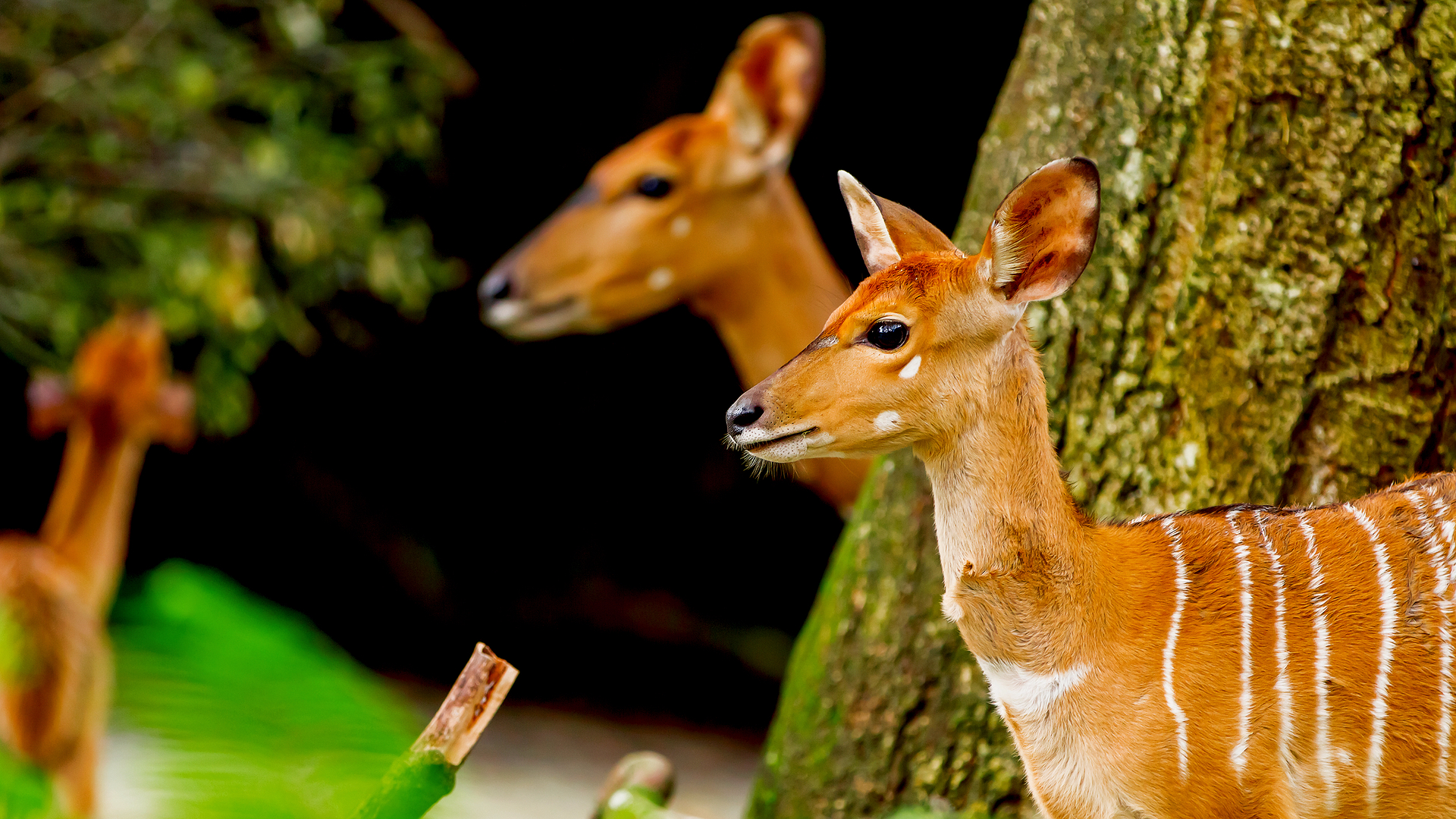- Home
- Conservancy
- Sitatunga
Description
he sitatunga is a medium-sized antelope. Males reach approximately 81–116 cm (32–46 in) at the shoulder, while females reach 72–90 cm (28–35 in). Males typically weigh 76–119 kg (168–262 lb), while females weigh 24–57 kg (53–126 lb). The sitatunga has a shaggy, water-resistant coat which varies in colour. The body and feet of this antelope are specially adapted to its swampy habitat. Only the males possess horns; these are spiral in shape, have one or two twists and are 45–92 cm (18–36 in) long.
Sitatunga are active mainly during the early hours after dawn, the last one or two hours before dusk, and night. They are not territorial. Sitatunga are selective in what they eat and feed mainly on new foliage, fresh grasses, aquatic plants, sedges and browse. Females are sexually mature by one year of age, while males take one and a half years to mature. Breeding occurs throughout the year but peaks in the dry season. Gestation lasts for nearly eight months, after which generally a single calf is born. Lifespan recorded in captivity averages 22 to 23 years.
The sitatunga is confined to swampy and marshy habitats. Here they occur in tall and dense vegetation as well as seasonal swamps, marshy clearings in forests, riparian thickets and mangrove swamps. Habitat loss is the most severe threat to the survival of the sitatunga. The species has been classified under the Least Concern category by the International Union for Conservation of Nature and Natural Resources (IUCN), and under Appendix III (Ghana) of the Washington Convention (CITES)
Fun Facts
Sitatunga are active mainly during the early hours after dawn, the last one or two hours before dusk, and at night, and spend a large part of this time feeding. Basically sedentary, they rest in flat areas and reed beds, especially during the hotter part of the day. They seldom leave their swamp habitat during the daytime. Though sitatunga commonly form pairs or remain solitary, larger groups have also been observed. A study in Kenya recorded a herd of as many as nine individuals, comprising an adult male, four females and four juveniles.
Loose groups may be formed but interaction among individuals is very low Individuals generally associate only with their own sex. The sitatunga is not territorial. Males may engage in locking horns with other males and attacking vegetation using their horns. They may perform feinting by raising their forelegs with the hindlegs rooted in the ground as a threat display. Sitatunga interact with each other by first touching their noses, which may be followed by licking each other and nibbling.
Alarmed animals may stand motionless, with the head held high and one leg raised. Sitatunga may occasionally emit a series of coughs or barks, usually at night, which may cause other animals to join in, and these sounds can be heard across the swamp. This barking may be used by females to warn off other females. Males often utter a low bellow on coming across a female or a herd of females in the mating season. A low-pitched squeak may be uttered while feeding. Mothers communicate with their calves by bleats. Sitatunga can feed or rest close to southern lechwe herds, but do not interact with them. They often attract yellow-billed oxpeckers, African jacanas and great egrets.
Sitatunga are good swimmers, but limit themselves to water with profuse vegetation in order to escape crocodiles. In some cases, for instance when troubled by flies or pursued by predators, the sitatunga might fully submerge themselves in the water except for the nose and the eyes, which they keep slightly above the water surface. Due to its close association with water, the sitatunga are often described as "aquatic antelopes", like the waterbuck. They often dry themselves under the sun after feeding in water. Predators of the sitatunga include lions, wild dogs, crocodiles and leopards.
